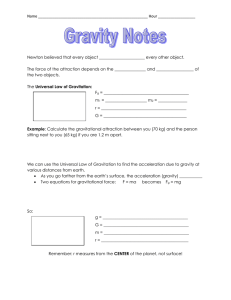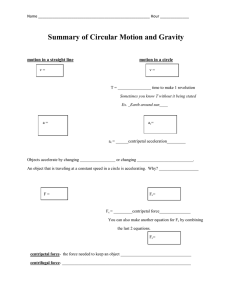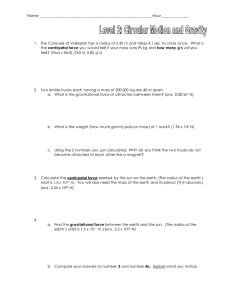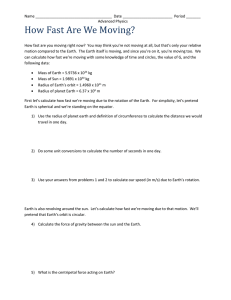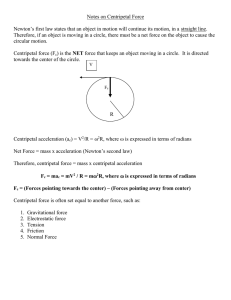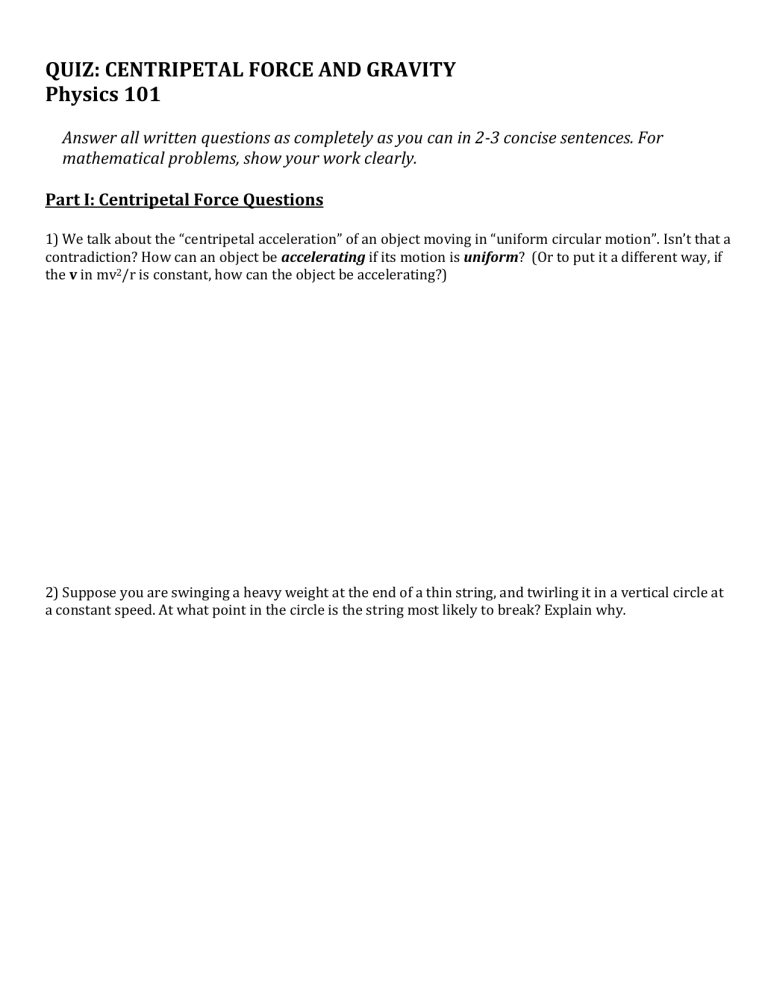
QUIZ: CENTRIPETAL FORCE AND GRAVITY Physics 101 Answer all written questions as completely as you can in 2-3 concise sentences. For mathematical problems, show your work clearly. Part I: Centripetal Force Questions 1) We talk about the “centripetal acceleration” of an object moving in “uniform circular motion”. Isn’t that a contradiction? How can an object be accelerating if its motion is uniform? (Or to put it a different way, if the v in mv2/r is constant, how can the object be accelerating?) 2) Suppose you are swinging a heavy weight at the end of a thin string, and twirling it in a vertical circle at a constant speed. At what point in the circle is the string most likely to break? Explain why. 3) The picture below shows Olympic short-track speed skaters making a turn. Discuss their technique in terms of physics. In other words, how does the position of their bodies, the angle of their skates, etc., help them take a turn as fast as possible? You can draw a diagram showing the directions of the forces if that will help. Part II: Centripetal Force Problem 1) In one of the old Batman movies, the Batmobile is shown making a turn by shooting a grappling hook and a steel cable around a pole… TOP VIEW pole cable a) What is the point of this contraption? In terms of physics, what does it supposedly allow the Batmobile to do, and how? b) Suppose the Batmobile has a mass of 1800 kg. If the Batmobile’s grappling-cable is designed so that it can make a 10 meter radius turn at 40 mph (17.9 m/s) even if the road is very slippery, what is the maximum tension that the cable needs to be able to withstand? Part III: Orbits 1) The image below shows an asteroid in an elliptical orbit around the Sun. Label the points in the orbit where the asteroid would be travelling its fastest and its slowest speeds. 2) The image below shows a satellite in a nearly-circular orbit around the Earth. Draw what would happen to the orbit if the satellite fired its thrusters to increase its orbital speed in its direction of motion at point A. Part IV: Newton’s Law of Gravitation 1) Astronomers have discovered a distant planet that is similar to Earth, but has twice the radius and three times the mass of Earth. Will the acceleration due to gravity be greater than or less than 9.8 m/s2 on this planet’s surface? Explain why. 2) Suppose we had a 1m diameter sphere of solid lead. It would have a mass of 5937 kg. Imagine we wanted to directly measure the gravitational force between this large sphere and a .5kg lab weight. The closest we can get the two objects’ centers without them touching is about .55m. a) Calculate the gravitational force between the two objects at that distance. b) Do you think any of the equipment we have in the lab would be sufficient to measure a force of that size? Why or why not? FORMULAS & STUFF FOR MOTION WITH A CONSTANT VELOCITY Δ x=vt FOR MOTION WITH A CONSTANT ACCELERATION vf = vi + a t Δx = vi t + ½ a t2 vf2 = vi2 + 2 a Δx FOR ACCELERATED FREEFALL IN EARTH GRAVITY a = g = 9.8 m/s2 NEWTON’S SECOND LAW F = ma FRICTION F = μN FOR UNIFORM CIRCULAR MOTION ac = v2 / r Fc = mv2 / r GRAVITATIONAL FORCE F = G M m / r2 where G = 6.67 x 10-11 Nm2/kg2
